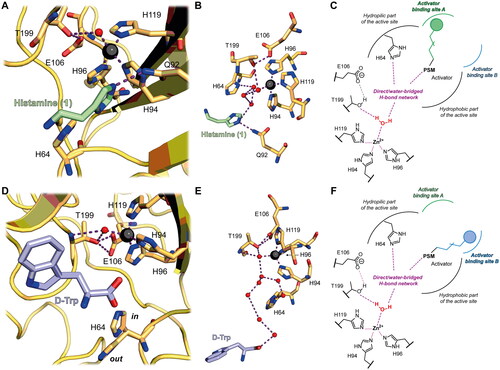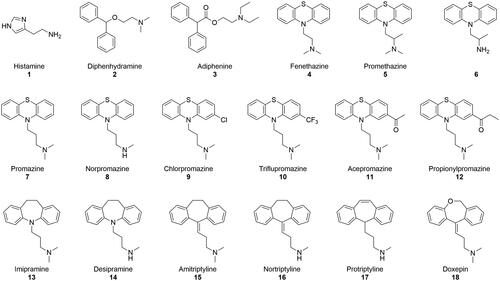Figures & data
Table 1. hCA I, II, IV and VII activation with compounds 2–18 by a stopped-flow CO2 hydrase assay. Histamine (1) used as reference CAA.


